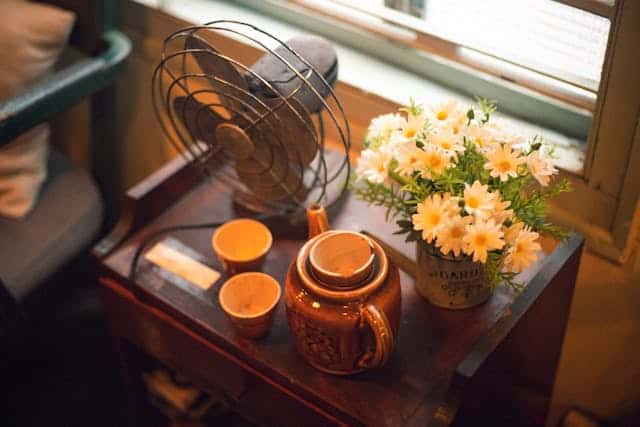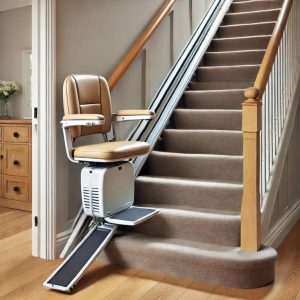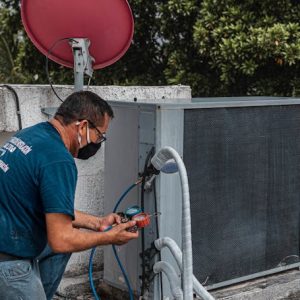Swamp cooler fans, also known as evaporative coolers, have been a staple in many households for years, particularly in arid regions where traditional air conditioning systems might not be as effective or affordable. Swamp cooler fans offer a distinct and innovative approach to cooling, capitalizing on the natural evaporation process to provide effective relief in hot and dry climates. These fans offer a cost-effective and environmentally friendly alternative to traditional air conditioning units.
Understanding the science behind swamp cooler fans can shed light on why they are so effective in certain climates and how they operate compared to other cooling systems.
Understanding Evaporative Cooling
At the heart of swamp cooler fans lies the principle of evaporative cooling. Unlike conventional air conditioners that use refrigerants to cool the air, swamp coolers utilize the natural process of evaporation to lower the temperature of a room.
The Evaporation Process
When water evaporates, it absorbs heat from its surroundings, resulting in a drop in temperature. In a swamp cooler, a fan draws warm air from the outside and passes it over water-saturated pads or filters.
As the air moves through these pads, the water evaporates, extracting heat from the air and cooling it in the process. The cooler, moist air is then blown into the living space, providing a refreshing breeze.
Humidity Considerations
One crucial factor in the effectiveness of swamp coolers is humidity. Evaporative cooling works best in dry climates where the air is hot but not already saturated with moisture. In humid environments, the air has less capacity to absorb additional moisture, limiting the cooling effect of evaporative coolers.
Therefore, swamp coolers are most commonly found in regions with low humidity levels, such as desert areas.
Components of Swamp Cooler Fans
To understand how swamp cooler fans operate, it’s essential to examine their key components and how they work together to produce cool air.
Water Reservoir
The water reservoir is where the supply of water for the evaporative process is stored. Typically located at the bottom of the unit, it can vary in size depending on the model of the swamp cooler.
Some units may have built-in mechanisms for automatic water refilling, while others require manual replenishment.
Pump
The pump is responsible for circulating water from the reservoir to the cooling pads. It ensures a steady flow of water over the pads, allowing for efficient evaporation and cooling.
Pumps in swamp cooler fans are usually submersible, meaning they operate while submerged in water to prevent overheating.
Cooling Pads
Cooling pads, also known as evaporative pads or filters, are the medium through which air is cooled in a swamp cooler. These pads are typically made of materials that can absorb and retain water, such as cellulose or synthetic fibers.
As air passes through the wet pads, heat is exchanged, and the air is cooled before being released into the living space.
Fan
The fan is responsible for drawing warm air from the outside and passing it over the cooling pads. It then propels the cooled air into the room, creating a breeze that helps lower the overall temperature. The size and power of the fan can vary depending on the size and design of the swamp cooler.
Advantages of Swamp Cooler Fans
Swamp cooler fans offer several advantages over traditional air conditioning systems, making them a popular choice for many homeowners, particularly in dry climates.
Energy Efficiency
One of the most significant advantages of swamp cooler fans is their energy efficiency. Unlike air conditioners, which require a significant amount of electricity to operate compressors and refrigerant systems, swamp coolers rely on the natural process of evaporation, which consumes far less energy.
This can result in lower utility bills and reduced energy consumption, making swamp coolers a more environmentally friendly cooling option.
Cost-Effectiveness
In addition to being energy efficient, swamp cooler fans are also more affordable to purchase and install than traditional air conditioning units. The simplicity of their design and the absence of complex mechanical components contribute to their lower cost.
Additionally, the ongoing operational costs of swamp coolers, such as water and electricity usage, are typically lower than those of air conditioners, making them a cost-effective cooling solution in the long run.
Environmentally Friendly
Swamp cooler fans are considered more environmentally friendly than air conditioners for several reasons. Firstly, they do not rely on refrigerants that can contribute to ozone depletion and climate change. Secondly, they consume less electricity, reducing greenhouse gas emissions associated with power generation.
Finally, swamp coolers use water as their primary cooling agent, which is a renewable resource, unlike the refrigerants used in air conditioners.
Improved Air Quality
Another benefit of swamp cooler fans is their ability to improve indoor air quality. As air passes through the wet cooling pads, it is filtered and humidified, removing dust, pollen, and other airborne particles.
This can be especially beneficial for individuals with allergies or respiratory conditions, as swamp coolers can help alleviate symptoms and provide relief from indoor air pollutants.
Limitations and Considerations
While swamp cooler fans offer many advantages, they may not be suitable for all climates or living situations. It’s essential to consider their limitations and potential drawbacks before investing in a swamp cooler.
Humidity Sensitivity
As mentioned earlier, swamp cooler fans are most effective in dry climates with low humidity levels. In humid environments, the cooling effect of evaporative cooling is significantly reduced, making swamp coolers less efficient.
Therefore, homeowners in humid regions may not experience the same level of cooling or energy savings with a swamp cooler compared to those in arid climates.
Maintenance Requirements
Like any cooling system, swamp cooler fans require regular maintenance to ensure optimal performance and longevity. This includes cleaning or replacing the cooling pads, checking and cleaning the water reservoir, and inspecting the pump and fan for any signs of wear or damage.
Failure to maintain a swamp cooler properly can lead to reduced efficiency, air quality issues, and potential breakdowns.
Water Usage
While swamp cooler fans are more water-efficient than traditional air conditioners, they still require a steady supply of water to operate.
Homeowners should be mindful of their water usage and consider the environmental impact of running a swamp cooler, particularly in areas where water is scarce or subject to restrictions. Additionally, standing water in the reservoir can become a breeding ground for bacteria and mold if not properly maintained, posing potential health risks.
Noise Levels
Depending on the size and design of the fan, swamp cooler fans can produce varying levels of noise during operation. While some models are relatively quiet, others may emit a noticeable hum or sound of rushing air.
Homeowners sensitive to noise should consider this factor when selecting a swamp cooler and place it in a location where noise won’t be a significant issue.
Conclusion
Swamp cooler fans offer a cost-effective, energy-efficient, and environmentally friendly alternative to traditional air conditioning systems.
By harnessing the natural process of evaporation, these cooling devices can provide relief from the heat in dry climates while improving indoor air quality.
However, homeowners should carefully consider their climate, maintenance requirements, and water usage before investing in a swamp cooler.
With proper care and attention, swamp cooler fans can provide reliable and effective cooling for years to come.
Published By: improveresidence.com




